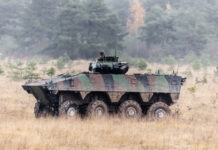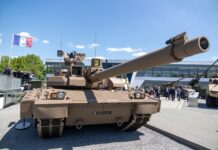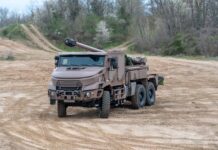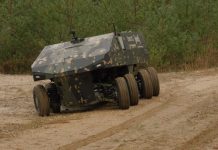In 2023, the Army initiated a vast transformation plan toward ‘a war fighting Army.’ This transformation is the answer to the deep evolutions of the strategic context. The objective is to produce more power through better organisation, for increased responsiveness. Due to its operational contract, the Army must be capable of deploying a two-brigade division along with its supporting elements within 30 days by 2027. The idea is to generate units adapted to multi-field multi-domain (M2MC) requirements and more reactive commands. According to the reform’s promoters, the new structures will be incubators of critical capabilities for high-intensity operational engagement.

By the summer of 2024, these new commands will be fully operational and interact closely with the Corps and Divisions headquarters. Under the authority of Army Headquarters (EMAT), the Force and Land Operations Command (CFOT) remains the central piece of the command system. The HQs located in Lille include the operational Land HQs (EMOT) and the Land Command for operations in Europe (CTE), which has just been established recently. Specialised divisional commands created with the 2016 ‘Au Contact’ model will be transformed into specific mission-oriented organisations.
Reorganisation of divisional-level headquarters
The Deep Actions and Intelligence Command (CAPR), which includes three brigades – air combat, intelligence, and artillery – will coordinate units operating in the 50 km to 500 km zone. The objective is to create a more responsive intelligence-fire loop. It will include the Strasbourg Intelligence Brigade and the 19 Artillery Brigade, which will be recreated in summer 2025 in Lyon. The Theatre Support and Logistics Command (CALT) will oversee the rear area of operations and logistics. It will combine the current logistics command and the Land forces maintenance and a recreated Engineer Brigade. The command will include the 19, 31 Engineer Regiments, 25 RGA, 28 Geographic Group, 2nd Dragoon Regiment (CBRN), and the 132 Regiment (canine unit).
The newly created Digital Support and Cyber Command (CATNC) operates in communications, cyber security, and data management. The objective is to integrate a hardened, structured cyber capability into the joint manoeuvre force. The Army has bet on digitalising all combat platforms and creating a combat cloud as part of collaborative combat. The Digital and Cyber Support Brigade (BANC) combines the five Signal regiments (28, 40, 41, 48, 53). In 2025, the brigade will encompass a cyber battalion composed of the 807 and 808 companies based in Rennes. Special forces are also evolving with the emergence of a Land Special Actions Command (CAST) for Military influence and indirect actions. In addition to the Special Forces units, the attachment of the Centre for Operational Military Partnership (CPMO) and the Joint Centre for Environmental Actions (CIAE) is effective.
We can also mention the Combined Arms Combat Training Command (COMECIA), which ensures the preparation of forces, which is vital in the context of the new Military Programming Act. The transformation will impact the two fighting divisions. The Third Division will oversee prevention and influence and, as such, focus on ‘operational military partnerships’ in the Indian Ocean and Africa. First Division in Besancon will focus on Europe, especially on the Eastern Flank. The combined arms brigades (BIA) will be the central element of deployable engagements, with a force of 5,000 soldiers each. The order of battle will be modified to incorporate support capabilities, such as cyber and maintenance, to gain autonomy and responsiveness quickly. The transformation will allow brigades to better respond to the tightening of operations and their unpredictability, as well as to be more efficient in daily business. In this vein, the 9 Marine Infantry Brigade is in the process of integrating the 5 Overseas Interarmes Regiment (RIAOM) based in Djibouti.
In conclusion, air-land engagement seeks to dominate and destroy the enemy, but it also serves to build, conquer, and stabilise. This reform should be inspired by the principle of the ‘Joint Air-Ground Integration Center’ (JAGIC) of the US Army established ten years ago. C2 is one of the key factors of Western operational superiority, and this reform aims to maintain it. At the army staff level (EMAT), the future Combat command (CCF) will be in charge of speeding up unit adaptation, with new adaptations expected to arrive more quickly than in the past.
Jean François Auran












